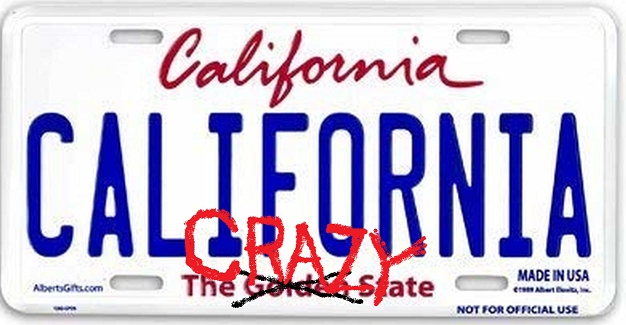
Richard Cordray and California Governor Gavin Newsom Team Up to Create Yet Another Layer of Bureaucratic Oversight
27 January 2020 – As if doing business in the land of high taxes, exorbitant rents and swelling homeless populations wasn’t hard enough. California Governor Gavin Newsom, in his ongoing war against the Trump administration, is working with former CFPB Director, Richard Cordray on the creation of it’s own “Mini-CFPB”. This proposal, already included in the 2020 state budget is intended to fill the gap left by the less punitive CFPB under the Trump administration.
This proposed bureau would regulate, audit, fine and punish any business that it feels is “under-regulated, including, but not limited to, debt collectors, credit reporting agencies, and financial technology companies.” Considering it intends to supplement its funding through fines, expect their reach to extend deep into all areas of consumer loan servicing (yes, you too repossession industry) and operate with a much lower asset threshold for supervisory authority than the existing Federal Agency model of $10B (that means you too small credit unions.)
On January 10, 2020, California Governor Gavin Newsom released his budget summary for 2020 to 2021. Fearing that the Trump administration will further roll back consumer financial protections, Gov. Newsom proposed the California Consumer Financial Protection Law, which would provide the state’s primary financial services regulator with additional authority to enforce consumer protection laws.
The proposed California bureau would also likely go further than any federal agency to protect consumers from being harassed on their cellphones by debt collectors or from being harmed by a predatory small business loan, according to testimony in March before the state Assembly’s Banking and Finance Committee about how expanded powers would work.
Democrats have been complaining that since the transition of the Obama to the Trump administration, there has been a drop in enforcement actions by the federal CFPB and lighter penalties for wrongdoers. Since California often leads the nation in regulatory policymaking, all financial institutions and service providers will have to pay close attention to a state CFPB.

How big of an impact it will have on national financial companies and lenders is unclear, but it is intended to function as a “mini-CFPB” and given how many companies do business in California, it could be massive. California has long been a laboratory for uber-progressive ideas and for years now, the Democrats have held the governor’s mansion as well as super-majorities in both legislative chambers. As a result, Democrats can make policy in California without much, if any meaningful input from Republicans.
Below is the official release on the discussed formation of this proposed department.
Discussion
In his budget summary for 2020 to 2021 (“Budget”), Gov. Newsom expressed concern that “[t]he federal government’s rollback of the [Consumer Financial Protection Bureau (“CFPB”)] leaves Californians vulnerable to predatory businesses and leaves companies without the clarity they need to innovate.” Seeking to protect Californians from the effects of such rollbacks, Gov. Newsom proposed that state funds be allocated to enact and administer the California Consumer Financial Protection Law (“CCFPL”).
A draft of the CCFPL is not yet available. However, as described in the Budget, the CCFPL would expand the authority and capacity of the state’s primary financial services regulator, the Department of Business Oversight (“DBO”), “to protect [California] consumers and foster the responsible development of new financial products.”
Change in Regulatory Structure
The DBO, which would be re-named the Department of Financial Protection and Innovation (“DFPI”), would be responsible for:
- Offering services to empower and educate consumers, especially older Americans, students, military service members, and recent immigrants;
- Licensing and examining new industries that are currently under-regulated [including, but not limited to, debt collectors, credit reporting agencies, and financial technology companies];
- Analyzing patterns and developments in the market to inform evidence-based policies and enforcement;
- Protecting consumers through enforcement against unfair, deceptive, and abusive practices;
- Establishing a new Financial Technology Innovation Office that will proactively cultivate the responsible development of new consumer financial products;
- Offering legal support for the administration of the new law; and
- Expanding existing administrative and information technology staff to support the DFPI’s increased regulatory responsibilities.
The statements on the DFPI indicate that it will be another “mini-CFPB” (i.e. a state version of the CFPB) that will protect California consumers in a way that Gov. Newsom believes the CFPB cannot. Former CFPB Director Richard Cordray is reportedly working with California to develop the DFPI.
DFPI Funding and Staffing
The Budget includes a $10.2 million Financial Protection Fund and the creation of 44 new positions at the DFPI between 2020 and 2021. This will grow to $19.3 million and 90 new positions at the DFPI between 2022 and 2023, to establish and administer the CCFPL. According to the Budget, initial costs for the DFPI and the CCFPL “will be covered by available settlement proceeds in the State Corporations and Financial Institutions Funds, with future costs covered by fees on any newly-covered industries and increased fees on existing licensees.”
Takeaway
Gov. Newsom’s comments in the Budget suggest that California will be more active in investigating regulated financial services entities and enforcing California’s existing consumer protection laws. Additional regulations may be passed as part of this initiative. Action by California is consistent with a growing trend among the states to be more active in their oversight of regulated industries in response to a less active CFPB. Industry participants should be mindful of this trend, assessing their compliance programs to manage oversight from multiple entities under multiple regulatory schemes.
Source: JDSupra











Facebook Comments